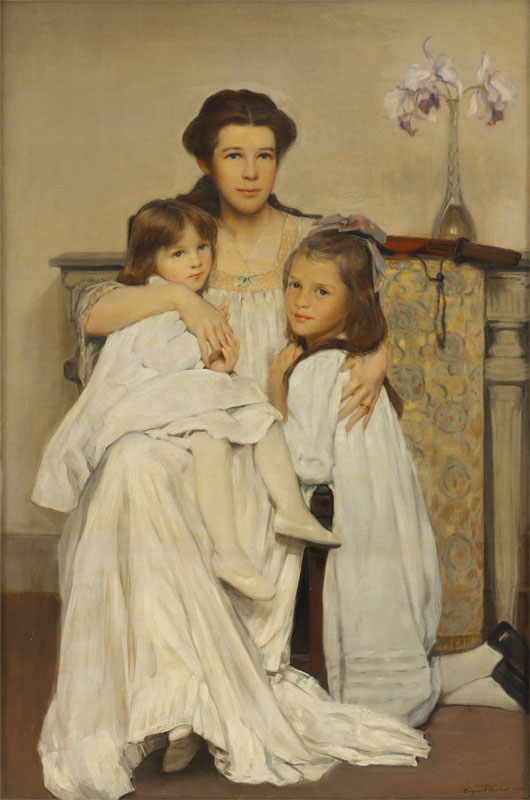
several years ago, a reader of Agapeta told me that some ideas expressed in my post Components of Love overlap those put forward by Erich Fromm in his 1956 book The Art of Loving. I have thus read it.
His approach to the subject is radically different from that of other scholars I mentioned in my article. For his book Lovestyles, J. A. Lee adopted a standard sociological approach by studying love as it exists in the population, not as it should ideally be. In The Four Loves, C. S. Lewis based himself on the classical Greek teminology for the different forms of love. The long book L’Amour et l’Occident by D. de Rougemont examines the evolution in Western Europe, from the 12th to the 20th century, of the “Tristan and Iseult myth,” the romantic view of love as a superhuman passion bordering mysticism, doomed to be broken by the reality of life; he opposes to it the ideal of Christian love. On the other hand, Fromm starts from scratch, he unfolds his own personal thought, without reference to any cultural tradition, nor any sociological or historical data. Added to it is a superficial criticism of capitalism and its negative influence on love, against which he only proposes to reclaim the individual (he does not seem to envisage how changing the social and economic organization of humanity could have beneficial effects on love).
Fromm does not call love what exists now—for him this not real love—but only what it should be, a kind of of perfection that probably is seen nowhere in our present world. Thus Lee compares Fromm’s view of love to the Christian ideal of agape.
The question of equality in love is soon raised in the book, and indeed Fromm gives to that word a meaning quite different from mine. I defined equality as interchangeability: people are equal if anyone of them can be replaced by any other without changing the result. I explained that it applies to the economic, social and political sphere, but not necessarily to an intimate relation, as the latter is often based on the peculiarity or even unicity of the beloved. On the other hand, Fromm defines equality as the fact that “we are all one” or, according to Kant, that “no man must be the means for the ends of another man,” and “all men are equal inasmuch as they are ends, and only ends, and never means to each other.” He deplores that “in contemporary capitalistic society,” equality means now “sameness rather than oneness.” Thus what he calls equality is what I call mutual respect and absence of exploitation and manipulation.
He sees erotic love to some extent as a love between equals and at the same time based on the “polarity of the sexes,” which remains quite rigid in his conception. Strong gender stereotypes permeate his thinking, and his “equality” between man and woman looks more like the “complementarity of the sexes” put forward by pro-family conservatives, or the balance of male and female prerogatives seen in some primitive societies that were gender-balanced but not gender-equal (for instance the Iroquois and the Bushmen). His view of erotic love is strongly heteronormative, leading him to depreciate homosexuality:
The male-female polarity is also the basis for interpersonal creativity. […] The homosexual deviation is a failure to attain this polarized union, and thus the homosexual suffers from the pain of never-resolved separateness, a failure, however, which he shares with the average heterosexual who cannot love.
Fromm considers several forms of love, he does not distinguish them primarily by their “style” (as Lee), or by the type of feeling or relation (as Lewis and I), but by their “object.”
First there is what he calls “brotherly love,” which correponds to philia. He considers it as the most fundamental form of love, underlying all other types. He recognizes that it is “love between equals” for his own definition of equality: “brotherly love is based on the experience that we are all one.” He sees the beginning of it in the love for the helpless, the poor and the stranger. In my view helping a poor or helpless person is an unequal relation, but as said above, Fromm gives a different meaning to equality.
Then he considers the love of parents for their children, and he admits that it represents a relation between unequals. Here again he shows his strong gender prejudices, as he fundamentally distinguishes motherly from fatherly love. The mother gives her love unconditionally, or does not give it, the child cannot do anything to earn that love; on the other hand the father’s love is conditioned by the behaviour of the child, the father gives it as a reward when the child fulfils his duty and conforms to parental expectations. Fromm puts these two loves in temporal succession: the child first needs mother and her unconditional love, then father and his love as reward for good behaviour, and finally grows up to be independent. This conception represents the traditional stereotype of the woman as the loving caretaker of babies and toddlers, and the man as the principle of authority for older children.
Parental love as described by Fromm corresponds partially to storge in my (and Lewis’) terminology, but my conception of storge is much wider, as it includes most non-erotic affectionate interpersonal relations, not restricted to family.
Next, erotic love is characterized by Fromm as both love between equals (for his definition of equality as “oneness”) and exclusive love for a unique person. He never considers erotic polyamory, which exists nevertheless and is described by Lee as the ludic eros lovestyle. And as I mentioned above, he envisages it only as love between a man and a woman.
Having described what I call philia, storge and eros, he finally proposes two other types of loves, having unusual “objects.” First self-love, which some authors would rather call self-acceptance; he explains that it is distinct from selfishness, as it does not exclude others. Then he discusses at length love of God. Both are not love in my view, as I restrict it to relations between distinct people (or between people and animals able to show affection and friendship).
Although Fromm’s ideal of love resembles the Christian description of agape, as it is a discipline requiring selfless commitment and will, he never uses the word agape, nor does he propose a type of love corresponding to it.
Fromm’s typology of love is expounded in a long chapter entitled “The Theory of Love,” which makes more than half of the book. It is followed by two shorter chapters, “Love and Its Disentegration in Contemporary Western Society” and “The Practice of Love,” both of which I did not find very useful.
To conclude, I consider this book rather as a failure: the expression of purely personal opinions, lacking scholarship and research.
Reference: Erich Fromm, The Art of Loving (1956), Internet Archive.
Previously published on Agapeta, 2015/12/20.


Erich Fromm was right.
You seek research about love?